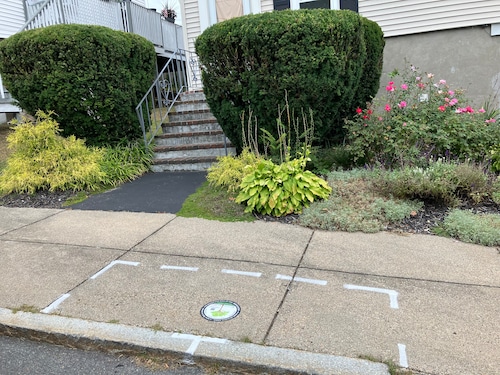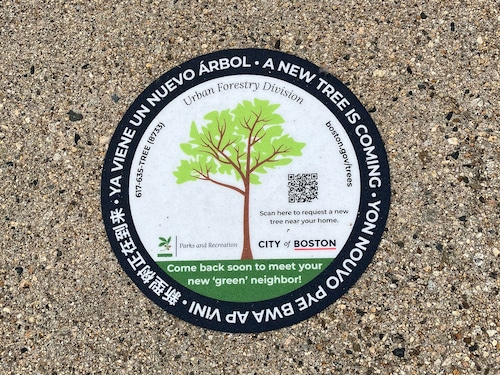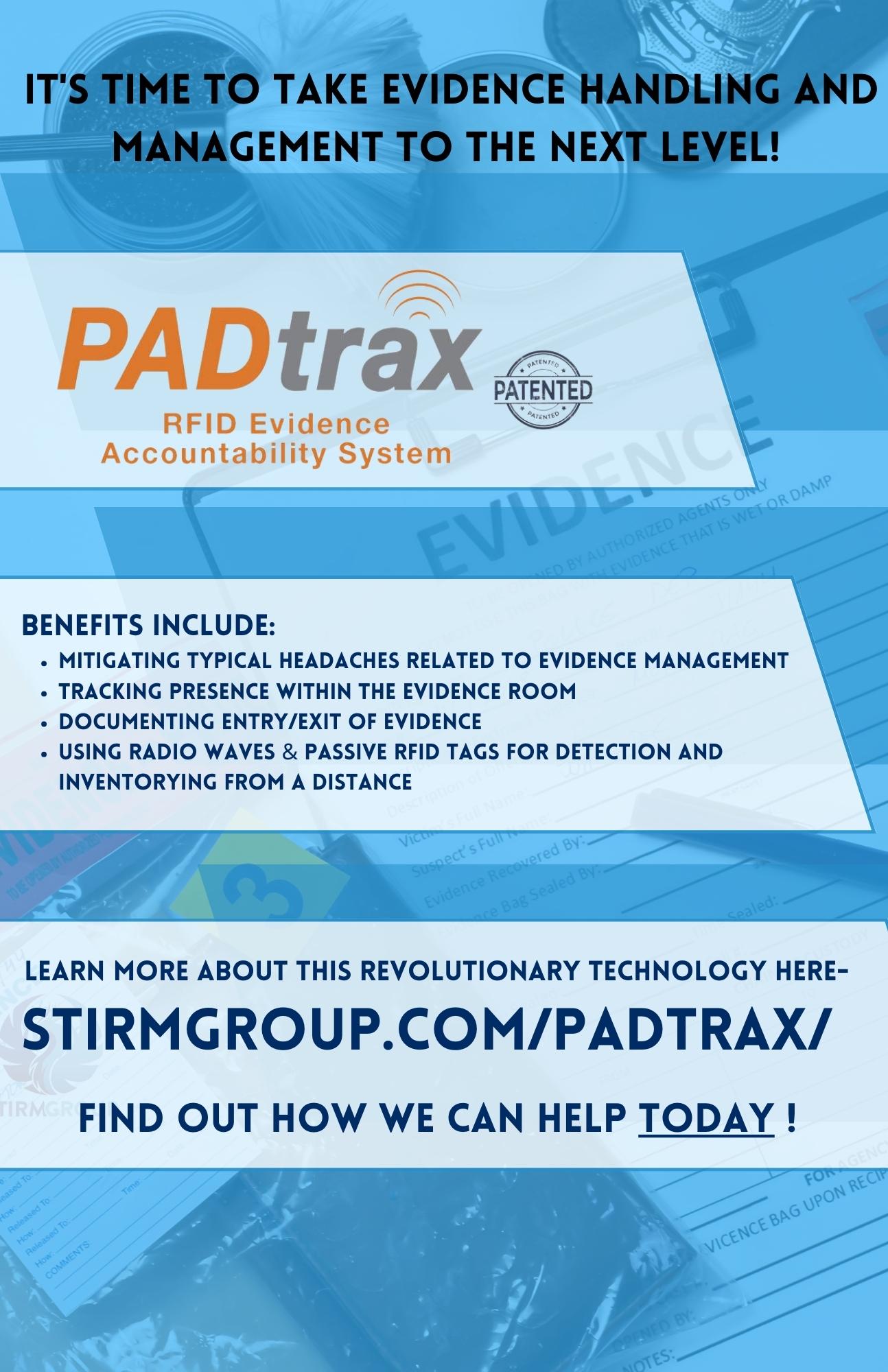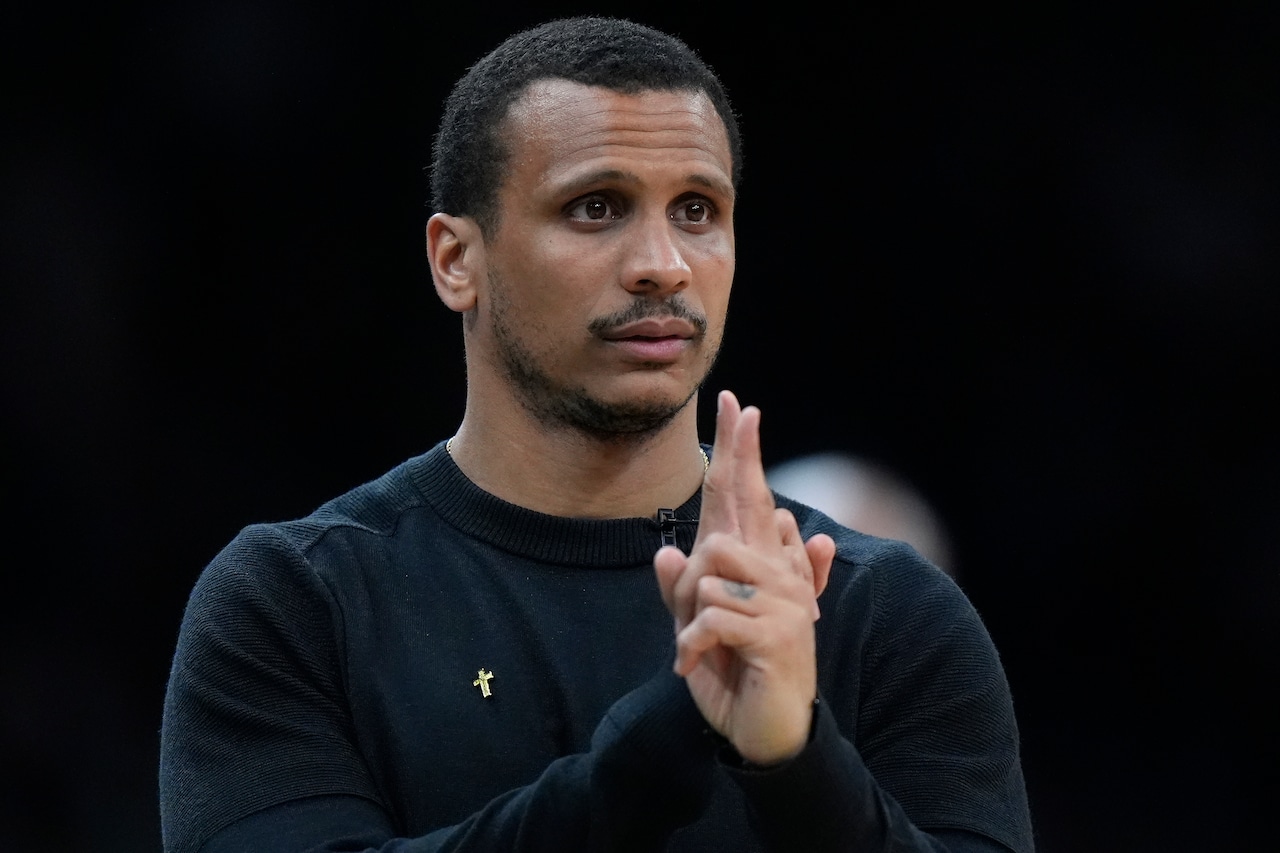Since the beginning of 2022, the city of Boston has planted more than 5,000 trees on public property.
Some of those trees are part of planned public works projects, but many are the result of simple requests from residents who can get a tree planted for free.
Todd Mistor, director of the city’s Urban Forestry Division, said his agency determines where new trees should be planted in a few ways. The first is replacing any tree that is removed: While they don’t remove healthy trees, when trees begin to decline, they can pose safety risks to the public.
“If there was a tree there, we want to make sure that there’s a tree there in the future, even if the existing tree is no longer viable,” he said.
In addition, whenever projects like street renovations or reconfigurations are undertaken, the Urban Forestry Division works with the Public Works Department to include space for new trees.
The final way of adding trees is through resident requests. Any Boston resident can submit a request to have a street tree planted in front of their home.
While it may not happen overnight, the city will do its best to determine a viable location and species at that address, as long as it leaves enough sidewalk space for accessibility and isn’t too close to a crosswalk or street light.

A painted rectangle painted in front of a home on Cowing Street in West Roxbury is where the city of Boston will plant a tree — for free. It’s part of a program to increase the tree canopy across the city.(Anne Brennan/MassLive)
The Urban Forestry Division works with residential property owners who they know will be committed to protecting and caring for the tree in the coming years.
If a renter requests a tree, they will contact the landlord through the tenant, tax records or neighborhood groups. If they can’t find the property owner, they may hold off on planting a tree, because they can’t guarantee that a renter will be there long-term.
“For these trees to survive and truly provide benefits for the neighborhood, they need to really survive in the first couple years after being planted there and then thrive for the next 15 to 20 years to provide those benefits,” Mistor said.
The division does outreach to spread the word about the program, he said, targeting the priority zones established in the Urban Forestry Plan.
Whenever a new tree is going to be planted, a sticker is placed on the ground beforehand, letting neighbors know and providing a QR code allowing passersby to learn more and request their own tree. Then, once the tree is in the ground, a tag with the same information, as well as information about the tree’s care, is attached.

A marker on the sidewalk on Cowing Street in West Roxbury provides information about the city of Boston’s tree planting program.(Anne Brennan/MassLive)
Communication with neighbors is crucial to ensuring the success of new trees, and that sometimes means scaling back on what they decide to plant, Mistor said.
Urban forestry officials often choose to plant just a few trees at a time on a street, rather than lining a block all at once, he said, and can add more in subsequent years.
This approach has the added benefit of diversity in the age of the trees and the opportunity to plant potentially better-suited species that may not be available at the time of the initial planting.
“It’s about getting those first few people interested, and from there I think it’s easier for us to build interest in a neighborhood, or on a block, on the street, whatever it may be,” he said.
A street in Allston where a new tree was being planted led four or five neighbors to request trees.
A tree request for private property
However, only about 40% of the trees within Boston city limits are on public property. Some local nonprofits are working to plant trees on private property, too, including those that partner with the Boston Tree Alliance, a city program established in 2023 to encourage plantings and tree maintenance on land that the city does not control.
One of the local organizations that has received a grant from the Boston Tree Alliance is Speak for the Trees, which allows residents of Dorchester, Roxbury, Hyde Park and Mattapan to request a free tree to be planted at their home.
Like the city itself, the group does a lot of community outreach to encourage residents to sign up. Associate Director MarS McCormick said a lot of the organization’s work has to do with relationship building and repairing harm done in the past to convince community members of the benefits of new trees.
How to request a tree
Requesting a tree to be planted in front of your home is easy and free. Residents can call 311 or submit a request through the 311 mobile app, or call the Urban Forestry Division directly at 617-635-TREE (8733).
Tree locations must be at least 10 feet from light poles, driveways, fire hydrants and intersections. Trees can only be planted on sidewalks at least 6 feet wide, not including the curb, to maintain an accessible pedestrian path at least 5 feet wide. The tree must also have room to grow and cannot interfere with power lines or be located in front of a building entrance.
Once you submit a request, an arborist will visit the site to determine if it is viable for a tree. If it is approved, the new tree will be planted within a year of the request being submitted (trees are only planted in the spring and fall).
To learn more about the program, click here.





